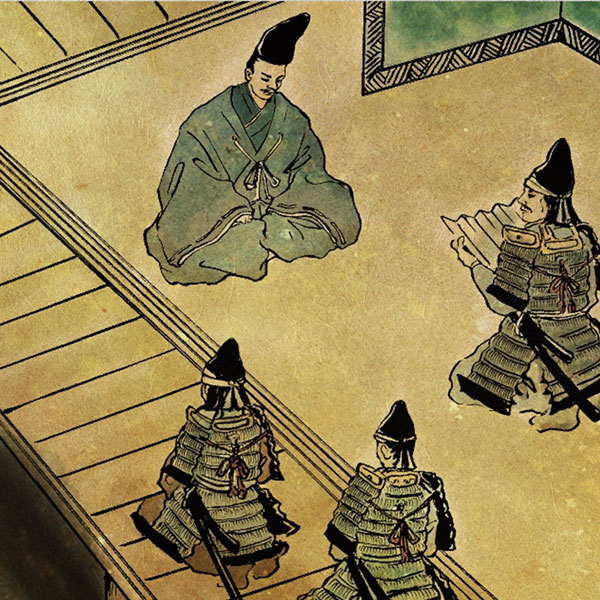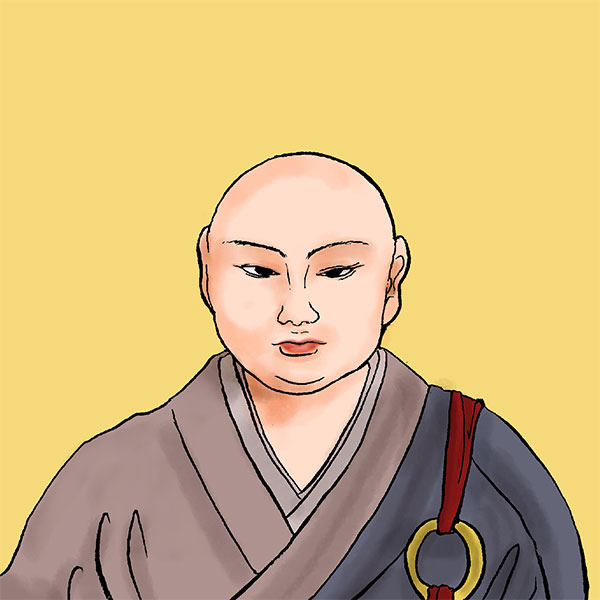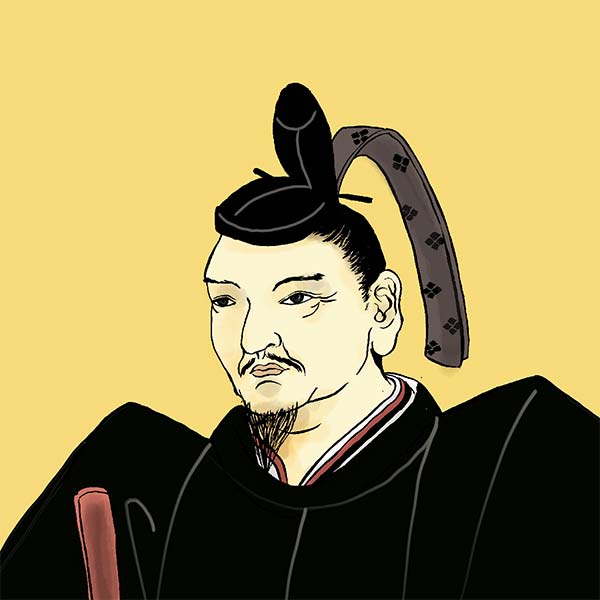Meio political change (1/2)The coup that began the Sengoku period

Meio political change
- Article category
- case file
- Incident name
- Meio Coup (1493)
- place
- Kyoto
- Related castles, temples and shrines

Nijo Castle
- people involved
The event that triggered the Warring States Period, a period of warring states that could be considered the flower of Japanese history, was the Meio Coup, which occurred in Kyoto in April 1493. A coup d'état in which Tomiko Hino, the legal wife of Yoshimasa Ashikaga, the eighth shogun of the Muromachi shogunate, and Masamoto Hosokawa replaced the shogunate led to a decline in the authority of the shogunate, and widespread rebellion and the arrival of the Sengoku period. This time, we will explain the background and impact of the Meio Coup, which can be said to be a turning point in that era.
``Onin War'' is the background to the Meio political change.
Before explaining the Meio Coup, I would like to explain the Onin War, which lasted approximately 11 years from 1467 to 1477. This battle is actually
- Power struggle between Katsumoto Hosokawa and Sozen Yamana, who held key positions in the shogunate (Sankan and Shijo)
- Power struggle between the Hatakeyama family and the Shiba family of “Sankan”
- 8th Shogun Yoshimasa Ashikaga's successor battle
This was mainly caused by these three factors.
Of these, the one I would like to pay the most attention to this time is ③, the dispute over the succession of the Shogun family. Yoshimasa Ashikaga and his legal wife, Tomiko Hino, did not produce a male heir for a long time. For this reason, Yoshimasa adopted his younger brother Yoshimi Ashikaga, who had become a monk, and adopted him as his successor. His guardian was Katsumoto Hosokawa.
However, later, Tomiko Hino gave birth to Yoshihisa Ashikaga. Tomiko, who wants to make her son a general, continues to make efforts to get rid of Yoshimi. At this time, it was Sozen Yamana who helped Tomiko. In this way, the Western army led by Sozen Yamana and Yoshihisa Ashikaga and the eastern army led by Katsumoto Hosokawa and Yoshimi Ashikaga came into conflict, and the shugo daimyos of each country supported their respective armies. A large-scale civil war called the Onin War occurs.
In the Onin War, the eastern army initially had an advantage, but the situation reversed when Masahiro Ouchi, a shugo daimyo who ruled over the Chugoku region and parts of Kitakyushu, joined the western army. Meanwhile, Yoshimi Ashikaga, who was the commander-in-chief of the Eastern Army, ran away from the Eastern Army and joined the Western Army, and the situation became chaotic. In 1473, Sozen Yamana and Katsumoto Hosokawa died one after another, but the war continued.
Eventually, Yoshimasa Ashikaga retired in 1474, and Yoshinao Ashikaga became the 9th shogun. The war ended when peace was signed between Masamoto Hosokawa, son of Katsumoto Hosokawa, and Masatoyo Yamana, grandson of Sozen Yamana. Afterwards, Yoshinari Hatakeyama and Masahiro Ouchi called for the continuation of the war, but the Western Army was disbanded in December 1476 through the mediation of Tomiko Hino, and the Onin War came to an end.
Restore the authority of the Shogunate! First hexagonal conquest
The authority of the Muromachi shogunate declined due to the Onin War. The ninth shogun, Yoshihisa Ashikaga, who ascended the throne under these difficult circumstances, began his efforts to somehow regain the authority of the shogunate.
After the Onin War, while the power of the shogunate was waning, the shugo daimyo and powerful families of various regions expanded their power. One of them was Rokkaku Takayori, the shugo of Omi Province (present-day Shiga Prefecture), who gained power by embezzling the manors of court nobles. However, in 1487, it was discovered that Takayori had embezzled the lands of court nobles and temples and shrines. The shogunate went on an expedition to Omi to subjugate Takayori (First Rokkaku Conquest, Hook of the Sea).
The expedition was carried out with the aim of once again increasing the presence of the Shogunate and restoring its prestige. However, Rokkaku Takayori cooperates with Koga to wage guerrilla warfare. The battle dragged on, and in March of the first year of Entoku (1489), Yoshihisa Ashikaga died of illness. He was 25 years old when he passed away. For this reason, the shogunate army canceled the Rokkaku conquest.
Succession battle resumes after deciding the 10th general
Yoshihisa Ashikaga had no children. As a result, a succession dispute breaks out once again. Masamoto Hosokawa, the head of the Hosokawa family, a family known as ``sankan'' who assists the shogun and holds the position of kanrei (kanrei), who assists the shogun and manages all political affairs, was recommended by Yoshimasa Ashikaga's half-brother, Izu Province (Izunokuni City, Shizuoka Prefecture). He was Yoshizumi Ashikaga, the son of Masatomo Ashikaga, who was in the Horikoshi Kubo, which ruled mainly over At that time, Yoshizumi was a Zen monk at Tenryuji Kogon-in Temple in Arashiyama, Kyoto (Ukyo Ward, Kyoto City), and called himself ``Kiyoaki''.He changed his name several times after that, but to avoid confusion, he will be written as Yoshizumi here. Unify.
On the other hand, Yoshimasa Ashikaga's legal wife, Tomiko Hino, and Masanaga Hatakeyama recommended Yoshimasa Ashikaga's child, Yosiki Ashikaga (later Yoshitane). Yoshiki's mother is Tomiko's younger sister, Ryoko Hino. In other words, Tomiko wanted to put her nephew in the position of shogun.
In January 1490, Yoshimasa Ashikaga, who had been in charge of government for a while, passed away due to illness, and Yoshiki Ashikaga was chosen as his successor. Tomiko Hino, who married into the shogun family for about 40 years and took charge of political affairs in place of Yoshimasa, who tended to retreat to art, had more power than Masamoto Hosokawa.
Masamoto Hosokawa and Sadamune Ise were dissatisfied with this decision. As for Masamoto, Yoshiki Ashikaga promised that he would leave political affairs to Masamoto and assumed the position of shogun, so things calmed down once, but there was no way such a promise would be kept, and Masamoto broke his promise. This will increase dissatisfaction.
Sadamune Ise was the son of Sadachika Ise, a close aide of Yoshimasa Ashikaga. During the ``Bunsho Coup'' in the summer of 1466, Sadachika had falsely advised Yoshimasa to expel and kill Yoshimi. For this reason, if the Yoshimi-Yoshiki line were to gain power, they would be treated poorly, and even worse, they might be in danger. Though Sadamune was dissatisfied with this idea, he handed over the headship of the family to his son and retired.
In this way, the conflict between Tomiko Hino, Yoshimi Ashikaga, and Yoshiki vs. Masamoto Hosokawa and Yoshizumi Ashikaga deepens, but Tomiko's unexpected actions end up causing ripples. In April of the same year, Tomiko decided to give the Ogawa Imperial Palace (Kamigyo Ward, Kyoto City), where Tomiko lived with Yoshihisa, to Yoshizumi as his residence. He may have intended to follow up on Yoshizumi's side, but allowing Yoshizumi to inherit the mansion, which was a symbol of the former shogun, would mean disrespecting the current shogun, Yoshiki. Enraged by this, Yoshimi demolished the Ogawa Imperial Palace without Tomiko's permission and seized the land.
There is a theory that the reason for Tomiko Hino's actions is that she aimed to keep Yoshimi and Yoshiki Ashikaga in check so that they would not indulge in power and go out of control. It may also have been meant as a threat that if he did not do as he wished, he would join Yoshizumi. Although Tomiko's thoughts are not clear, a rift arose between Tomiko and Yoshimi and Yoshiki over this matter. In the first place, Yoshimi and Tomiko were enemies who competed for the position of shogun during the Onin War. In this way, internal conflicts arose within the 10th Shogun's side, which was supposed to be monolithic. On July 5th, Yoshiki was inaugurated as the 10th Shogun. Yoshimi ran the government as an influential figure, but died of illness in 1491. Even after Yoshimi's death, the relationship between Yoshiki and Tomiko did not recover, and the conflict continued.
Second Rokkaku conquest and Kawachi conquest
Yoshimi Ashikaga, whom he had relied on as an influential figure, died, and his relationship with Tomiko Hino, who was supposed to be his backing, deteriorated, and in addition, his conflict with Masamoto Hosokawa continued. Against this backdrop, Yoshiki Ashikaga's strategy was to succeed in the Rokkaku conquest, which the 9th Shogun had not been able to accomplish, and to once again increase the authority of the shogunate. Despite Masamoto's strong opposition, the second Rokkaku conquest was carried out, and he was able to drive Rokkaku Takayori to Ise.
Although the Rokkaku conquest ended successfully, Masamoto Hosokawa broke his promise to leave the management of the government to him, and even after Yoshimi Ashikaga's death, he became increasingly dissatisfied with Yoshiki, who did not listen to his opinions. Furthermore, during the second Rokkaku conquest, Motoie Yasutomi, the vassal he had sent in his place, suffered a crushing defeat, and Yoshiki began to rely on daimyo other than Masamoto. In this way, Masamoto becomes even more dissatisfied with Yoshiki and falls into a negative spiral.
As if he didn't care about that, Yoshiki Ashikaga decided to send troops to Kawachi (southeast of Osaka Prefecture) to settle the dispute over the Hatakeyama family. In the Hatakeyama family, Mochikuni Hatakeyama's son Yoshinari Hatakeyama and his nephew Masanaga Hatakeyama were fighting over who would succeed him, and this was one of the causes of the Onin War. The conflict continued even after the Onin War, but since Yoshinari died of illness in 1491, Masanaga was fighting Yoshinari's son Motoie Hatakeyama (Yoshitoyo). Yoshiki was working with Masanaga, and upon Masanaga's request, he began to subjugate Motoie.
Masamoto Hosokawa opposed this. The Hosokawa family and the Hatakeyama family were one of the three kanrei families that produced the same kanrei, and they were based in the same Kinai region, so they had been rivals for many years. For the Hosokawa family, it was convenient for the Hatakeyama family to weaken due to the civil war, so they wanted to leave the civil war alone. However, in the end, the Kawachi conquest was carried out.
Yoshiki Ashikaga set out his punitive army on February 15th, and established his headquarters at Shogaku-ji Temple (Hirano Ward, Osaka City) on the 24th. They then besieged Takaya Castle (Habikino City, Osaka Prefecture), where Motoie Hatakeyama was located, and proceeded to subjugate them smoothly. Motoie was cornered to the brink of defeat.
Seeing these movements, Masamoto Hosokawa took a bold step to prolong the civil war within the Hatakeyama family by joining forces with Hatakeyama Motoie, who was his target of subjugation and was his own enemy. Furthermore, there was a rumor circulating in Kyoto at the time that ``Yoshiki Ashikaga would subjugate Masamoto Hosokawa after the subjugation of Motoie,'' so Masamoto decided to stage a coup against Yoshiki. Thinking that now that Yoshiki was not in his home base of Kyoto was an opportunity to raise an army, he persuaded Sadamune Ise, who was dissatisfied with Yoshiki, and Tomiko Hino, who was in conflict with Yoshiki, to join his side.
Furthermore, Masamoto Hosokawa marries his older sister, Horoshoin, to Masanori Akamatsu, and gains Masanori to his side. Masanori was a war magistrate during the first Rokkaku subjugation and was quite influential. Originally, the Akamatsu family was a "four-job" family, serving as the head of the samurai office, but they were subjugated by the shogunate as the mastermind behind the assassination of the sixth Shogun Yoshinori Ashikaga (Kakichi Rebellion) in 1441. It had been. Later, the Akamatsu family returned to politics with the help of Masamoto's father, Katsumoto Hosokawa, and he felt a great debt of gratitude to the Hosokawa family.
Meio political change ① Hosokawa Masamoto's raising of an army
Masamoto Hosokawa steadily made preparations for his coup d'état, and finally raised an army in Kyoto on the night of April 22, 1493. This was the beginning of the Meio political change. Masamoto first protected Yoshizumi Ashikaga, whom he had supported. They then attacked the mansions of the tenth shogun Yoshiki Ashikaga in Kawachi, including his relatives and sisters. In addition, he declared that Yoshizumi would be the 11th shogun, and he was inaugurated as shogun on April 28th.
The article on the Meio political change continues.
- people involved

- WriterNaoko Kurimoto(Writer)I am a former travel industry magazine reporter. I have loved history, both Japanese and world history, since I was a child. I usually enjoy visiting temples and shrines, especially shrines, and often do ``pilgrimages to sacred places'' themed around historical figures. My favorite military commander is Ishida Mitsunari, my favorite castle is Kumamoto Castle, and my favorite castle ruins is Hagi Castle. My heart flutters when I see the ruins of battle castles and the stone walls of castle ruins.





